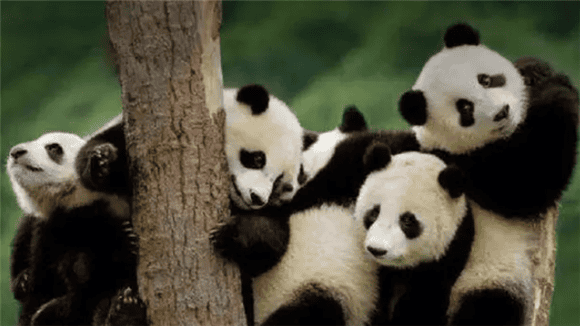Recently, 22-year-old giant panda Lin Hui passed away in Thailand. There has been a lot of news about giant pandas recently, including Yaya, a skinny giant panda living in the United States. She lives in a small cage, is electrocuted to extract sperm, and is artificially impregnated. She is not fed all year round, and is so hungry that she cannot sleep at night. The Meixiang family has an uninterrupted supply of ice. Wait, what happened to our national treasure? What went wrong? Statistically speaking, death at the age of 22 is indeed a bit early, but before more information is disclosed, let’s talk about the lifespan and current situation of giant pandas.

01. What is the physiological life span of a giant panda?
How long can giant pandas live? This is a question that many people have been discussing. This also helps us compare the life span of humans. For example, I saw some people saying that the giant panda Lin Hui in Thailand is quite At 70 years old, some people say it is equivalent to 80 years old.
But is it really so? This question is actually very difficult.
Because wild and captive animals are different. For example, the maximum lifespan of wild giant pandas seems to be 26 years old, but in captivity, they can live up to 38 years old. However, it is difficult to say whether this is the theoretical life span of giant pandas. After all, we know very little about giant pandas, which can be seen from our statistics on giant pandas.
For example, the statistics of giant pandas that can survive for more than 100 days after birth can be seen.
The above picture is the survival curve of captive giant pandas born in each year and surviving for more than 100 days. It can be seen that between 1975 and 1995, the overall number of surviving giant pandas was actually very few. , mostly in single digits. After 2000, this number began to increase rapidly, and by 2020 it can reach 40-50.
This survival number is very meaningful.
On the one hand, it represents changes in life expectancy. Life expectancy is originally a human statistical concept (life expectancy), which is also true for animals. One of the core factors affecting this data is infant mortality.
On the other hand, this also means that we know and understand more about giant pandas and have accumulated more data, so we can provide various conditions for giant pandas more reasonably to avoid Some accidental deaths.
So after these years of efforts, the age of death of giant pandas is actually constantly changing.
As shown in the figure above, it is the death curve of captive giant pandas. It can be seen that before the age of 25, the mortality rate of giant pandas is actually low, and it begins to increase rapidly after 25 years old.
The mortality rate of captive giant pandas remains at 0. 0378 ~ 0.0833 for 16 to 25 years old; after 26 years old, the mortality rate of captive giant pandas increases, and remains at 0. 125 for 26 to 32 years old. 0 ~ 0. 217 4, 33, 34 The mortality rate at the age of 35 decreased slightly, to 0. 076 9 and 0. 090 9 respectively, and the mortality rate after the age of 35 increased significantly
Generally speaking, it can be concluded that the survival curve of giant pandas belongs to Type I ( (Convex) curve, the vast majority of captive individuals can live to physiological age
Therefore, judging from the current data, the 22-year-old giant panda does die at a relatively early age.
02, Veterinary Medicine and Zoology - a rather embarrassing field
Although we are very concerned about animals, especially cute national treasures like giant pandas. But in fact, compared to humans, even the giant panda, a super national treasure, has far insufficient data and services. This is not a problem for China, but a problem for humans.

Our human lifespan has only been about 30 years in the long history. If we encounter something like the Spanish Flu, It plummeted even more, but after entering World War II, this number grew rapidly and more than doubled.
Behind this is the development of modern technology, especially medical and health technology. Countless doctors and researchers around the world have been conducting research on humans, looking for various drugs, treatments and so on. Human life span has increased by leaps and bounds.
But what about animals? negligible. The fields of veterinary medicine and zoology all over the world are very weak fields. Although there are indeed some drugs, they often work wonders with great efforts. As for other medical data, don't count on it.
This leads us to think that the conditions of giant pandas seem to be very good, but is this really the case? Maybe there will be a different answer in the future.
Not to mention, the fields of veterinary medicine and other fields currently focus more on pets and economic animals.
Finally, no matter what, with the development of our country's economy in recent years, we have more and more energy and financial resources to devote to the attention and protection of wild animals. I hope the future will be better.

 扫一扫微信交流
扫一扫微信交流
发布评论